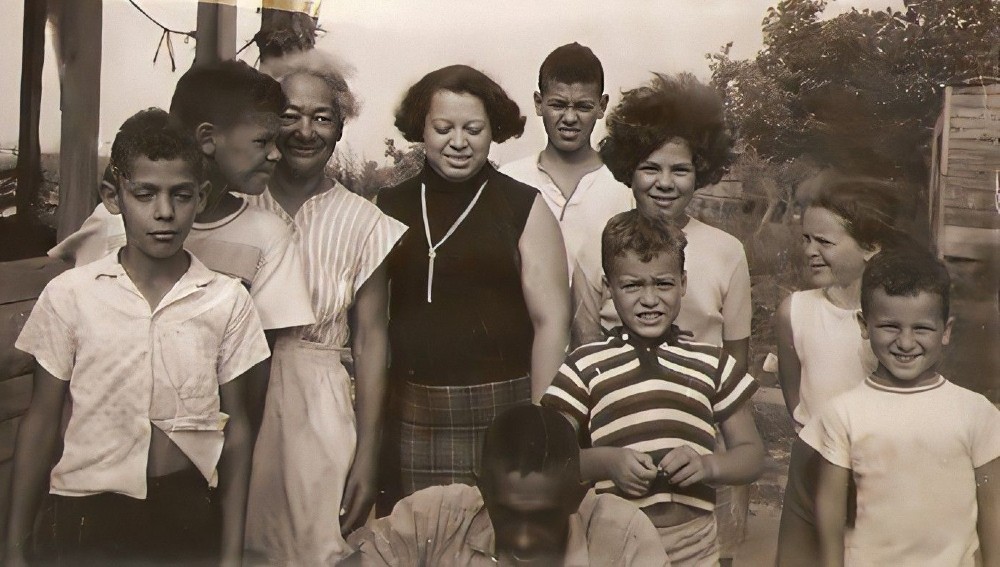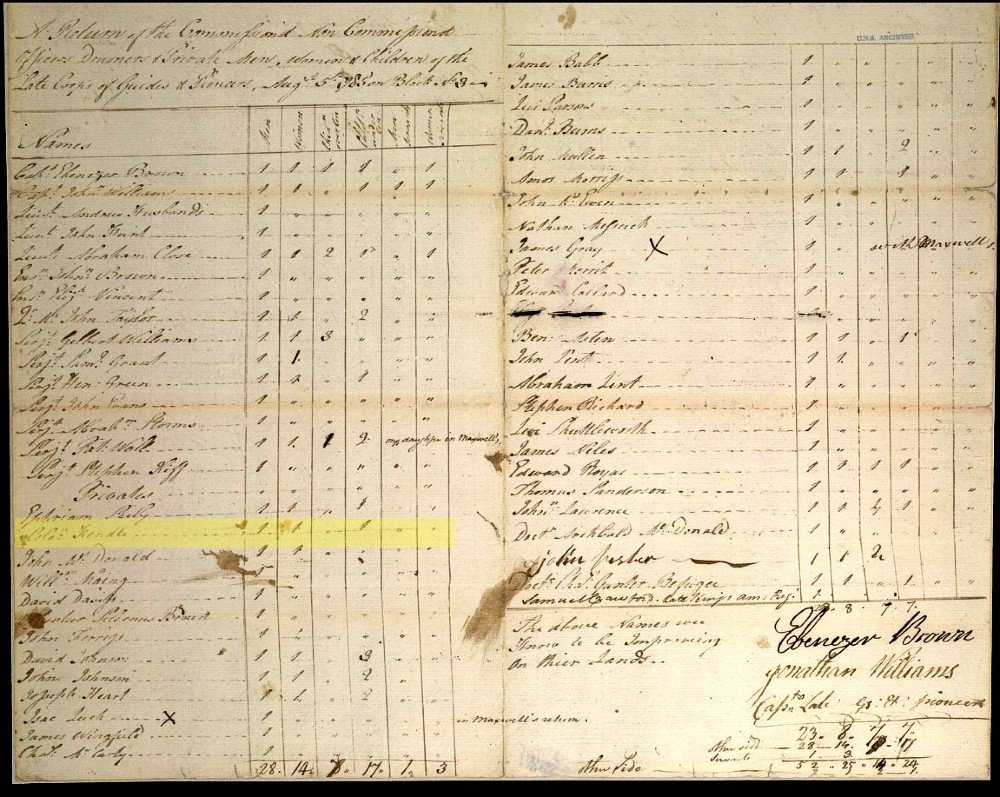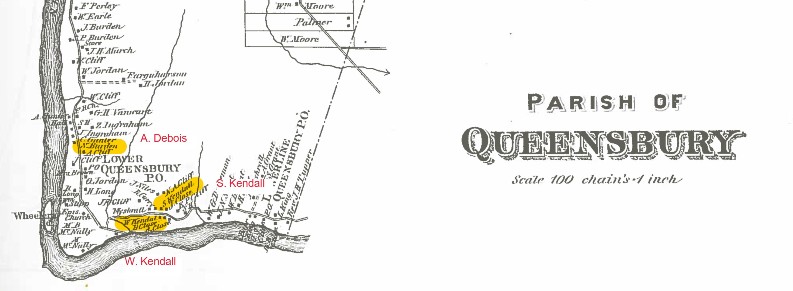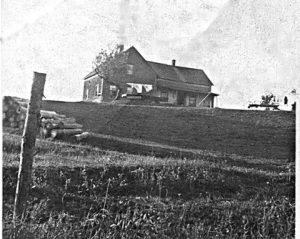A Gathering Place on “The Hill”
“He made this kind of a safe haven for any of the Blacks in
the area that didn’t have anywhere to go.”
– Jennifer Dow, Fredericton, 2020

Maud Kendall with her children and grandchildren gathered at the family home (“The Hill”), circa 1967.
Across the river from St Peter’s was another important Black community in Lower Queensbury, known as “The Hill”. Growing up, Jennifer Dow, was often told stories about “The Hill”. It was a place where many generations of the Kendall family lived, and where extended family gathered for over 200 years.
This property was first acquired by Solomon Kendall (after receiving a nearby grant of 209 acres in 1798). He was a Black Loyalist and farmer who served with The Guides and Pioneers, commanded by Colonel Beverly Robinson. Solomon Kendall must have been a man of great respect, since he was granted 209 acres, at a time when other Black settlers were receiving only 50 acres (if any at all).

Return of the Commissioned and Non-commissioned Officers, Drummers, and Privates, Men, Women, and Children of the Guides and Pioneers, August 5, 1785.
Solomon Kendall arrived in New Brunswick during the fall of 1783, with his wife Pricilla and a child under the age of 10. Together, they raised at least three children: Absalom (birthdate unknown), Solomon the 2nd (born 1794) and Mary (born 1799).
Solomon 2nd remained on “The Hill” and married Kesand Smith from Kingsclear Parish. In some of the census records they are listed as having 16 children. Of those children, two sons (Solomon Kendall 3rd and William Kendall) remained living on the farm. They each in turn built houses on opposite sides of the original road that extended through Lower Queensbury.
“The Hill” became a refuge of sorts for Black families in the area; it was a place where many different families would leave their children so they could travel elsewhere to find work. The last Kendall descendant to live on “The Hill” was Hewlett Marr, a blacksmith by trade. He passed away in 1999, and with his passing, descendants of Solomon Kendall lost more than just their cousin. They lost their ancestral home.
Jennifer Dow Speaks about Solomon Kendall (closed captions available in both English and French) – View this video with a transcript (EN).
Gathering places like “The Hill” anchored the heart of Black communities. They were more than just a place to meet on special occasions like birthdays or holidays; they were places where persons of African descent could band together, help each other, and contribute in significant ways to the social enfranchisement of themselves and their neighbours.



